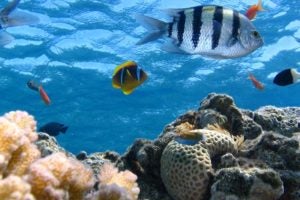
Learning Objective
Students will be able to discuss the diversity of life found in different habitats.
Grade Levels
K-2
Next Generation Science Standard
LS4-1. Make observations of plants and animals to compare the diversity of life in different habitats.
Materials Needed
Pictures of habitats (a set for each group)
Pictures of animals (a set for each group)
Lesson
Introduction and Teacher Modeling
- Gather the students together.
- Explain to the students that today they will be thinking about where animals live. Where an animal lives is called its habitat. In our habitat, we need things to survive.
- Ask the students to think of what humans need to survive.
- Make a list on the whiteboard called “Human Needs.” Write things such as clothing, water, food, shelter, love, etc.
- Ask students to raise their hands if they have a pet.
- Ask the students to think of what their pets need to survive.
- Make a second list on the whiteboard called “Pet Needs.”
- Student ideas for pet needs may include water, food, shelter, love, etc.
- Point out the needs humans and pets have in common.
- Ask the students to think about animals that live outside. Explain to students that like humans and pets, wild animals have basic needs that must be met in order for them to survive.
- Explain to the students that the three basic needs are food, water and shelter.
Guided Practice/Working Time
- Place the students in groups.
- Each group should be given pictures of habitats and pictures of animals.
- Have students consider which habitat would NOT be good for each animal. For example, an elephant would not live in the tundra because they don’t have hair and would get too cold.
- Explain to the students that a good habitat for the animal will help the animal to find all of its basic needs.
- Model placing a few animals on the correct habitat, explaining why.
Review and Closing
- Ask the students to think about the habitats that exist in their community. Call on a few students to share.

